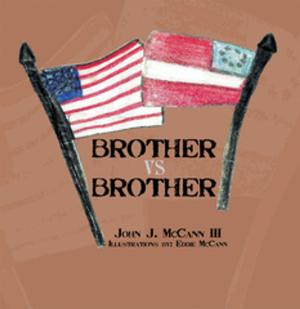| Author: | Stephen Chinlund | ISBN: | 9781462817009 |
| Publisher: | Xlibris US | Publication: | September 30, 2009 |
| Imprint: | Xlibris US | Language: | English |
| Author: | Stephen Chinlund |
| ISBN: | 9781462817009 |
| Publisher: | Xlibris US |
| Publication: | September 30, 2009 |
| Imprint: | Xlibris US |
| Language: | English |
Prison Transformation is the story of the changes in the New York State prison system from 1962 to 2009. Interwoven with that history is the biography of Stephen Chinlund, who lived through those big developments as an active participant in various capacities. In 1962, fourteen years before the Attica uprising, there were only twenty-two prisons in the state system. Then there were seventy-two, now sixty-six. Discipline was maintained by force, often capricious and brutal. There was only minimal education and vocational training. After growing up in New York City, going to good schools, and being ordained as an Episcopal priest, Chinlund started working inside as a volunteer. He created groups of people inside with the plan that they could help each other more effectively than he could help them by preaching or even counseling them directly himself. The groups developed into small communities inside the prisons. Chinlund also recognized the need to help the men and women after they were released and developed counseling and job training on the outside. Parole, at the time, provided none of that. With small steps, the prison system was improving, reflecting the growing consciousness of civil rights in the society at large. School opportunities were offered, and even college courses began to appear. But the progress was slow, and the discipline was still needlessly harsh. Chinlund became a consultant to the Narcotic Addiction Control Commission, helping new treatment facilities in the city get started, using his experience helping individuals who were locked up. He was then recruited, in 1968, to be the director of the Manhattan Rehabilitation Center, confining three hundred female heroin addicts. Then the uprising in Attica occurred in 1971. That tragedy led to a few more improvements: inmate grievance committees, contact visits, conjugal visits, inmate liaison committees, and some better schooling. In addition, the legislature created the Commission of Correction to be an independent monitor of the prisons. Chinlund had had success at the Manhattan Rehabilitation Center, so he moved on, in 1973, to become superintendent of the first work-release prison in New York State, giving reality to an important policy improvement. Governor Hugh Carey then asked him to become chairman of the Commission of Correction, where he was able to confirm the improvements that were being made. As important, he was able in 1979 to start the Network program, a more formal and extensive implementation of the old groups inside. Funded with federal money initially, it grew to be a force for good in twenty-six prisons, at its maximum size. Declining Careys request to serve another term, Chinlund moved on to a parish and then to be the executive director of the Episcopal Social Services, where he has continued the Network program and continued to advocate for progress in the correctional world. He continues that work after his retirement in 2005. The book tells the stories of the prisoners, staff, and politicians of those forty-eight years.
Prison Transformation is the story of the changes in the New York State prison system from 1962 to 2009. Interwoven with that history is the biography of Stephen Chinlund, who lived through those big developments as an active participant in various capacities. In 1962, fourteen years before the Attica uprising, there were only twenty-two prisons in the state system. Then there were seventy-two, now sixty-six. Discipline was maintained by force, often capricious and brutal. There was only minimal education and vocational training. After growing up in New York City, going to good schools, and being ordained as an Episcopal priest, Chinlund started working inside as a volunteer. He created groups of people inside with the plan that they could help each other more effectively than he could help them by preaching or even counseling them directly himself. The groups developed into small communities inside the prisons. Chinlund also recognized the need to help the men and women after they were released and developed counseling and job training on the outside. Parole, at the time, provided none of that. With small steps, the prison system was improving, reflecting the growing consciousness of civil rights in the society at large. School opportunities were offered, and even college courses began to appear. But the progress was slow, and the discipline was still needlessly harsh. Chinlund became a consultant to the Narcotic Addiction Control Commission, helping new treatment facilities in the city get started, using his experience helping individuals who were locked up. He was then recruited, in 1968, to be the director of the Manhattan Rehabilitation Center, confining three hundred female heroin addicts. Then the uprising in Attica occurred in 1971. That tragedy led to a few more improvements: inmate grievance committees, contact visits, conjugal visits, inmate liaison committees, and some better schooling. In addition, the legislature created the Commission of Correction to be an independent monitor of the prisons. Chinlund had had success at the Manhattan Rehabilitation Center, so he moved on, in 1973, to become superintendent of the first work-release prison in New York State, giving reality to an important policy improvement. Governor Hugh Carey then asked him to become chairman of the Commission of Correction, where he was able to confirm the improvements that were being made. As important, he was able in 1979 to start the Network program, a more formal and extensive implementation of the old groups inside. Funded with federal money initially, it grew to be a force for good in twenty-six prisons, at its maximum size. Declining Careys request to serve another term, Chinlund moved on to a parish and then to be the executive director of the Episcopal Social Services, where he has continued the Network program and continued to advocate for progress in the correctional world. He continues that work after his retirement in 2005. The book tells the stories of the prisoners, staff, and politicians of those forty-eight years.















